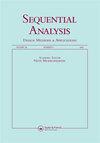安全监测中的互补假设
IF 0.6
4区 数学
Q4 STATISTICS & PROBABILITY
Sequential Analysis-Design Methods and Applications
Pub Date : 2020-07-02
DOI:10.1080/07474946.2020.1823195
引用次数: 0
摘要
摘要上市后安全监督研究解决了两个可操作的问题:(1)测试产品的风险是否高于标准?(2) 与标准相比,与测试产品相关的风险是否在一定的可容忍范围内?既定的技术通常不适用于这种互补的片面假设,但在实践中会得出有用的结论。对于两组研究,对可能的单侧二项式检验结果的搜索产生了样本量,保证置信区间排除了一个或另一个假设。通过连续监测,简单的缩减可以减少样本量。点和区间估计值来自研究结束时事件的二项式分布,或来自通过连续监测和提前停止的简单缩减界限的成分负二元数。渐近推导对应于构造置信区间的问题,该置信区间小于可容忍超额和不存在超额风险的参数值之间的距离。在通常的功率要求下,保证拒绝一对互补假设中的一个的研究比对单个假设的相应研究要大一些,但这种增加可能是可以容忍的,以换取肯定会有一个可行的结论。本文章由计算机程序翻译,如有差异,请以英文原文为准。
Complementary hypotheses in safety surveillance
Abstract Postmarketing safety surveillance studies address two actionable questions: (1) Is the test product riskier than a standard? (2) Is the risk associated with the test product within some tolerable margin by comparison to the standard? Established techniques, not commonly applied to the setting of such complementary one-sided hypotheses, lead to useful conclusions in practice. For two-group studies, a search over possible one-sided binomial test results yields sample sizes that guarantee that the confidence bounds exclude one or the other of the hypotheses. With continuous monitoring, simple curtailment reduces the sample size. Point and interval estimates follow from the binomial distribution of events at the end of the study or from component negative binomials for crossing a bound of simple curtailment with continuous monitoring and earlier stopping. An asymptotic derivation corresponds to the problem of constructing a confidence interval that is smaller than the distance between the parameter values for tolerable excess and the absence of excess risk. Studies with guaranteed rejection of one of the pair of complementary hypotheses are somewhat larger than corresponding studies of a single hypothesis under usual power requirements, but the increase may be tolerable in return for certainty that there will be an actionable conclusion.
求助全文
通过发布文献求助,成功后即可免费获取论文全文。
去求助
来源期刊

Sequential Analysis-Design Methods and Applications
STATISTICS & PROBABILITY-
CiteScore
1.40
自引率
12.50%
发文量
20
期刊介绍:
The purpose of Sequential Analysis is to contribute to theoretical and applied aspects of sequential methodologies in all areas of statistical science. Published papers highlight the development of new and important sequential approaches.
Interdisciplinary articles that emphasize the methodology of practical value to applied researchers and statistical consultants are highly encouraged. Papers that cover contemporary areas of applications including animal abundance, bioequivalence, communication science, computer simulations, data mining, directional data, disease mapping, environmental sampling, genome, imaging, microarrays, networking, parallel processing, pest management, sonar detection, spatial statistics, tracking, and engineering are deemed especially important. Of particular value are expository review articles that critically synthesize broad-based statistical issues. Papers on case-studies are also considered. All papers are refereed.
 求助内容:
求助内容: 应助结果提醒方式:
应助结果提醒方式:


